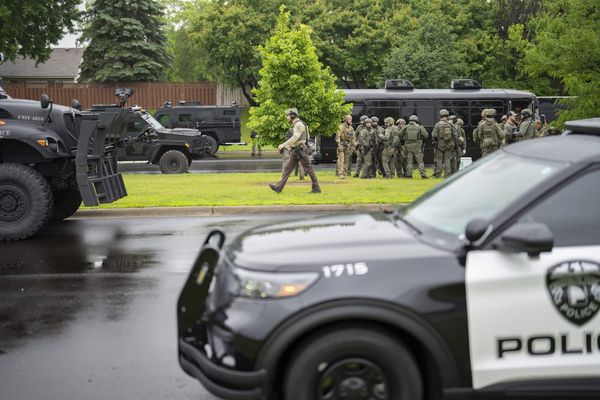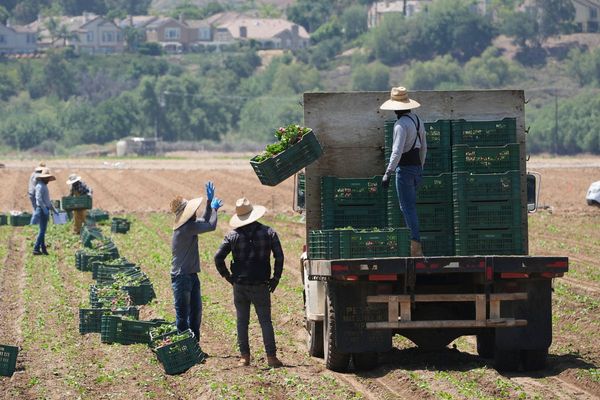Sure, spring may bring cherry blossoms and winter brings piles of some of the world’s best skiing snow, but autumn is one of the busiest and best seasons for visiting Japan. The weather is ideal for sightseeing and both cities and small towns colored with reds and oranges during the October foliage season. But there’s plenty to do beyond just sightseeing – such as dressing like a human-sized cat, perhaps.
When you’re in Japan in the fall, you’ll find dozens (hundreds, maybe) of festivals and events to attend, from an all-things-cat festival in Tokyo to a hot-air-balloon celebration, complete with ballooning classes. If you’re planning to head to Japan this autumn, be sure to plan your trip around at least one of these unique fall festivals.
Saga International Balloon Fiesta: Saga Prefecture
If you’re headed to the southern part of the country at the end of October, make plans to visit Saga sometime between October 30 and November 5. That’s when the town plays host to the annual Saga International Balloon Fiesta, the largest hot air balloon festival in Asia. Balloons take off early in the morning, so plan to arrive by about 5:30 a.m. if you want to watch more than 50 hot air balloons take to the skies. If you’re more of a night owl, don’t worry: there’s usually a nighttime show when the balloons light up the skies. There’s plenty to do, including hot air balloon classes, but be sure to dress appropriately as you’ll probably have to help fold and move the balloons. Even if hot air ballooning doesn’t float your boat (err, balloon) be sure to check out the huge market that includes traditional crafts, Saga-made goods, and plenty of food and drink options.
If you’ve been staying at ryokans, change things up with a stay at The Hamilton Ureshino, built in the style of a European manor house. It has indoor and outdoor onsens, plus a private (and bookable) co-ed hot spring.
Tori No Ichi Festivals: Across the country
The Tori-no-Ichi festival, which means “Day of the Bird,” is rooted in back in the days when Tokyo was called Edo (it became Tokyo in 1868.) It happens on the day of the rooster, according to the lunar calendar and was traditionally a day when farmers would go to shrines to sacrifice a chicken or rooster. It was a day for farmers to sell their crops and goods from the autumn harvest with the goal of starting off the new year economically strong. Tori no Ichi is celebrated across the country, but a great place to experience the culture as a tourist is in the Asakusa area of Tokyo, which has one of the largest celebrations throughout Japan. In many cities across the country, you’ll find Tori-no-Ichi parades, street parties, and vendors selling decorated bamboo rakes, said to bring prosperity to farmers, on November 8 and 20.
If you’re planning to check out the Asakusa celebrations, you’re close enough that you can stay just about anywhere in Tokyo. For a luxurious experience, splurge for a room at Hoshinoya Tokyo, where minimalist design meets Japanese hospitality. Don’t miss the hot spring on the top floor.
Takayama Autumn Festival: Gifu Prefecture
As you might imagine from the name, this festival lights up the night over the mountains of Kurama, near Kyoto. After sunset, hundreds of costumed participants carry torches through the streets toward the Yuki-jinja Shrine. The parade is supposed to welcome spirits from the shrine into the village to provide protection for residents. Some of the torches are massive, requiring the support of more than a dozen people. After several hours of slowly parading through the streets, the procession ends at the shrine where everyone socializes around a massive bonfire. This year’s festival is on October 22.
It’s easy to take public transportation to the festival from Kyoto, which has no shortage of modern and traditional lodging options. But if you want to stay closer to Kurama, book a room at the wooded and peaceful Hiroya, about 15 minutes from the festival’s start.
Kurama Fire Festival: Kurama (near Kyoto)
As you might imagine from the name, this festival lights up the night over the mountains of Kurama, near Kyoto. After sunset, hundreds of costumed participants carry torches through the streets toward the Yuki-jinja Shrine. The parade is supposed to welcome spirits from the shrine into the village as its thought that they offer protection for the residents. Some of the torches are massive, requiring the support of more than a dozen people. After several hours of slowly parading through the streets, the procession ends at the shrine where a massive bonfire is held. This year’s festival is on October 22.
It’s easy to take public transportation to the festival from Kyoto, which has no shortage of modern and traditional lodging options. But if you want stay closer to Kurama, book a room at the wooded and peaceful Hiroya, about 15 minutes from the festival start.
The Supernatural Cat Festival: Tokyo
You have to be at least a little curious about a festival called the “Supernatural Cat Festival” (Bake Neko, in Japanese.) And you can indulge that curiosity at the October 13 festival, held in Tokyo’s Kagurazaka neighborhood. To walk in the afternoon parade, all you’ll need is $5 for entry – oh, and a cat costume, of course. That’s right – there’s no judgment here over whether you’re in your teens or your 80s, gay or straight, male or female – but you will be judged if you don’t come dressed like a cat. It’s up to you what kind, however; both house cats and lions are welcome. Don’t have a cat costume handy? No worries – on-site makeup artists can transform you into your favorite feline in about five minutes. Before and after the festival, you’ll find food vendors, dance performances, and plenty of cat enthusiasts selling their best cat-inspired crafts. This festival displays Tokyo’s quirkiness and creativity at it’s best and worth a visit if you’re anywhere near the city in mid-October.
For a hotel close to the action, trendy travelers will want to book at a room at the UNPLAN Hostel Kagurazaka. Private rooms are available, though the traditional shared hostel rooms have a modern touch: individual pods separated by curtains that make your sleeping space much more private than an open bunkbed.







